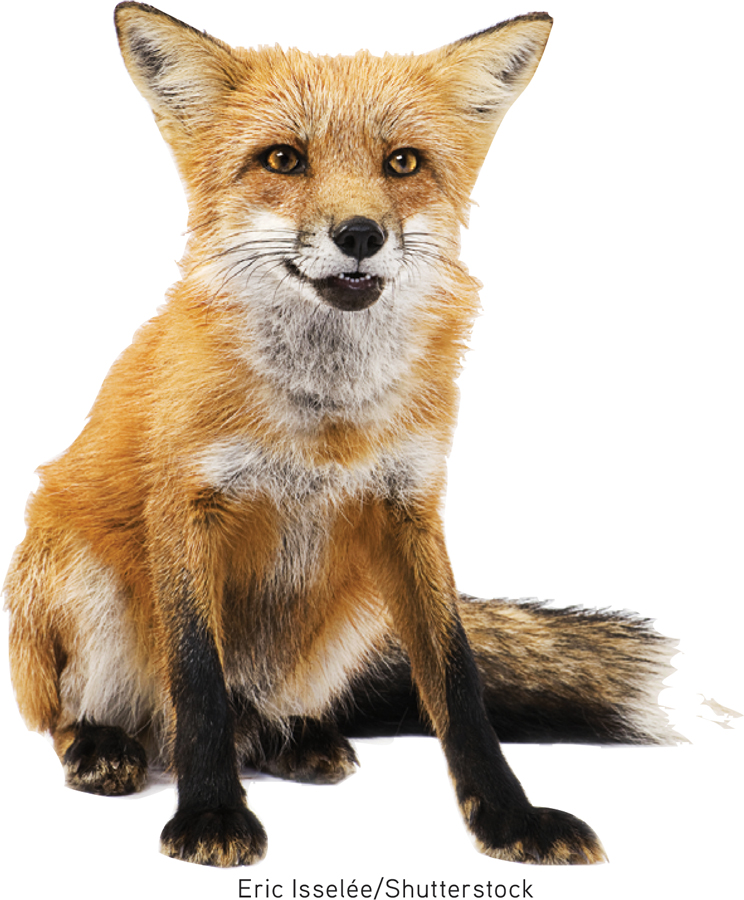12.1 Natural Selection and Adaptation
A fox is a wild and wary animal. If you capture a fox and try to befriend it, be careful. Stick your hand in the cage and, if the timid fox cannot flee, it may snack on your fingers. Russian scientist Dmitry Belyaev wondered how our human ancestors had domesticated dogs from their equally wild wolf forebears. Might he, within a comparatively short stretch of time, accomplish a similar feat by transforming the fearful fox into a friendly fox?

To find out, Belyaev set to work with 30 male and 100 female foxes. From their offspring he selected and mated the tamest 5 percent of males and 20 percent of females. (He measured tameness by the foxes’ responses to attempts to feed, handle, and stroke them.) Over more than 30 generations of foxes, Belyaev and his successor, Lyud-mila Trut, repeated that simple procedure. Forty years and 45,000 foxes later, they had a new breed of foxes that, in Trut’s (1999) words, were “docile, eager to please, and unmistakably domesticated…. Before our eyes, ‘the Beast’ has turned into ‘beauty,’ as the aggressive behavior of our herd’s wild [ancestors] entirely disappeared.” So friendly and eager for human contact were these animals, so inclined to whimper to attract attention and to lick people like affectionate dogs, that the cash-strapped institute seized on a way to raise funds—marketing its foxes as house pets.
Over time, traits that give an individual or a species a reproductive advantage are selected and will prevail. Animal breeding experiments manipulate genetic selection. Dog breeders have given us sheepdogs that herd, retrievers that retrieve, trackers that track, and pointers that point (Plomin et al., 1997). Psychologists, too, have bred animals to be serene or reactive, quick learners or slow ones.
Does the same process work with naturally occurring selection? Does natural selection explain our human tendencies? Nature has indeed selected advantageous variations from the new gene combinations produced at each human conception plus the mutations (random errors in gene replication) that sometimes result. But the tight genetic leash that predisposes a dog’s retrieving, a cat’s pouncing, or a bird’s nesting is looser on humans. The genes selected during our ancestral history provide more than a long leash; they give us a great capacity to learn and therefore to adapt to life in varied environments, from the tundra to the jungle. Genes and experience together wire the brain. Our adaptive flexibility in responding to different environments contributes to our fitness—our ability to survive and reproduce.
RETRIEVAL PRACTICE
- How are Belyaev and Trut’s breeding practices similar to, and how do they differ from, the way natural selection normally occurs?
Over multiple generations, Belyaev and Trut selected and bred foxes that exhibited a trait they desired: tameness. This process is similar to naturally occurring selection, but it differs in that natural selection normally favors traits (including those arising from mutations) that contribute to reproduction and survival.
- Would the heritability of aggressiveness be greater in Belyaev and Trut’s foxes, or in a wild population of foxes?
Heritability of aggressiveness would be greater in the wild population, with its greater genetic variation in aggressiveness.